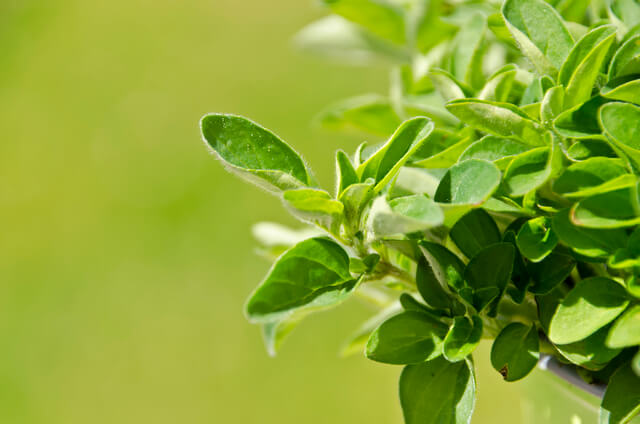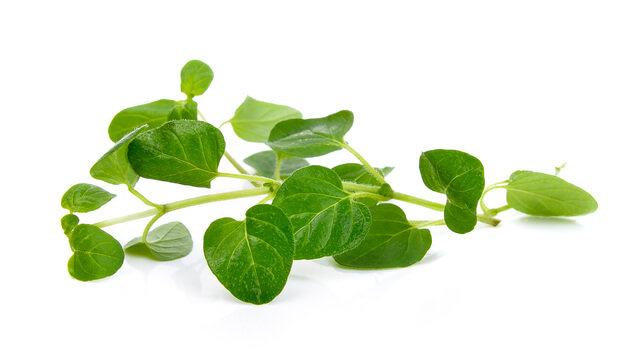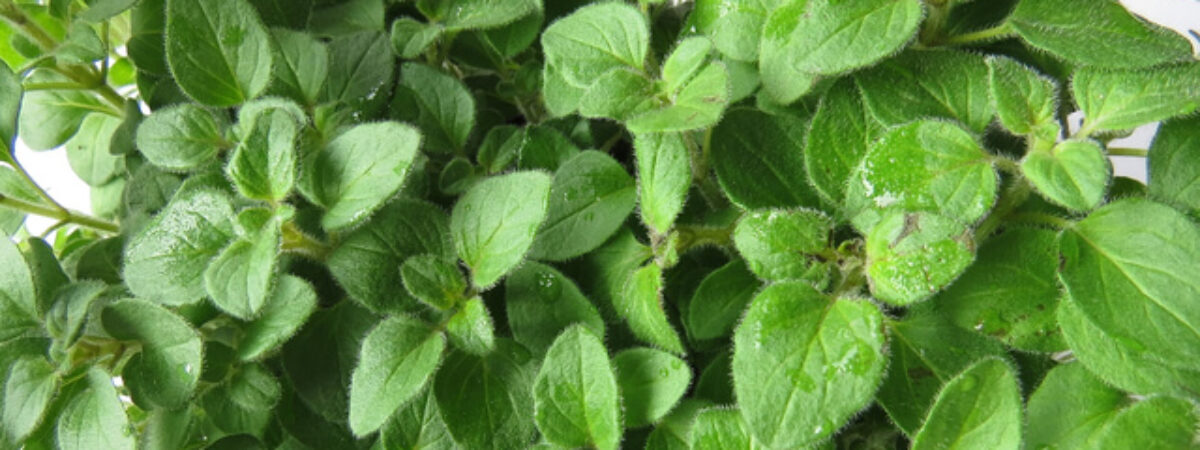Mexican Oregano is scientifically known as Lippia Graveolens. The Mexican oregano herb, as one, belongs to the Verbenaceae family and is native to the southwestern United States, Mexico, and Central America.
It’s an evergreen shrub or small tree that can grow to be around 8 feet tall if left to its own devices. Small cute foliage and bunches of aromatic white or yellowish blooms distinguish it.
Oregano is a well-known herb that several people equate with pizza and spaghetti sauce.
It’s among the most extensively consumed herbs on the earth, appearing in Mediterranean and Mexican cuisines and even as chili powder.
Although dehydrated oregano is most commonly used, fresh oregano is also used in certain cuisines.
Scent lippia, oregano cimarrón, Sonoran oregano, hierba dulce, redbrush lippia, scented mat grass, and Puerto Rican oregano are all names for the same plant.
Poliomintha longiflora and Monarda fistulosa var. menthifolia are some more species popularly referred to as “Mexican oregano,” but neither is connected to L. graveolens.
If encouraged to bloom, the plant’s nectar attracts bees and butterflies, as well as its seeds, which are enjoyed by birds.
Mexican oregano, like its Mediterranean relative, is a popular seasoning herb. It has a flavor that is regarded as being richer and more intense than Mediterranean oregano, with a lemony undertone.
Mexican oregano, like its Mediterranean relative, is a popular seasoning herb. It has a flavor that is regarded as being richer and more intense than Mediterranean oregano, with a lemony undertone. Click To TweetIt goes nicely with the flavors of classic Latin American food, whether fresh or dehydrated.
L. graveolens is a thorny, woody shrub that can reach a height of five feet and a width of the same. It has a lifespan of five to ten years.
The plant makes bunches of delicate, scented white or yellow blooms as well as little, scented fuzzy foliage.
For ages, stomachaches, allergies, coughing, and tension have all been treated with it in Central America. Constipation and gastrointestinal discomfort are believed to be relieved by the plant.

Oregano vs Mexican Oregano
Oregano
Origanum vulgare, which means “joy of the mountains” in Greek, is the botanical name for regular oregano. It grows naturally on the sides of mountains in Greece and other Mediterranean nations, where it is a popular herb.
The plant’s small leaves have a powerful perfume and flavor that goes well with a range of savory meals.
The plant produces tasty pink or purple blossoms when it is in flowering. It is gluten-free and acceptable for vegan and paleo diets as an ingredient.
Mexican Oregano
The hardest hitting oregano cultivar is Mexican oregano scientifically known as Lippia graveolens. It’s also known as Mexican marjoram or Mexican wild sage and is from another botanical family.
If your dish expressly asks for Mexican oregano, don’t pick a different species. For something like a robust, spicy flavor, use Mexican oregano when producing your homemade chili powder.
Growing guide
Mexican oregano plants are drought-tolerant evergreens that prefer well-drained medium and bright sun, but can also thrive in partial shade and are a worthy candidate for pot gardening.
Mexican oregano enjoy full sun but will grow in partial shade. It requires a pH of 6.0 to 8.0 and loamy, sandy, well-drained medium.
Add some manure to the ground, but be careful not to over-fertilize this crop. If you think you need to fertilize, use a 3-2-3 (NPK) combination.
When you live in Zones 10 and up, you should cut your plants in the autumn to one to two feet tall to promote young development in the spring.If you live in Zones 10 and up, you should cut your plants in the autumn to one to two feet tall to promote young development in the spring.
Once your plants are planted, they just require extensive irrigation periodically. Spray once the soil is completely dry in the winter. This herb is drought resistant, however, it will lose its foliage if there is a prolonged period of dryness.
You can cultivate this plant in a pot and overwinter it inside if you live north of Zone 9. You might also plant it as an annual.
Prior to actually sowing, add little manure to the growth area.Provide these plants plenty of room for growth because they can get really big.It’s important not to overwater the Mexican oregano because it doesn’t like damp feet.
Growing Mexican oregano seeds indoors in seed trays is the best way to go. Place almost a half-dozen seeds in the seed mix, about 1/4 inch (5mm) deep, and keep the soil moist. Click To TweetGrowing from Seed
Growing Mexican oregano seeds indoors in seed trays is the best way to go. Place almost a half-dozen seeds in the seed mix, about 1/4 inch (5mm) deep, and keep the soil moist. Generally, germination takes 10–14 days, however, it can take a bit of time in certain cases.
After the last winters have gone and your seedlings have entrenched themselves with 3 or 4 true leaves, they are able to be installed out, but they must first be toughened off by either progressive exposure time or transferring them into a greenhouse.
Unless you’re establishing in a garden or cultivating in a pot, you should immerse the seedling in high-quality soil to just below the initial foliage to encourage the anchoring system to develop more quickly. Plants should be spaced around 12 inches apart.

Caring Guide
This herb is relatively easy to care for because it is a tough and water-stress plant; nevertheless, overwatering it can cause root rot.
There are no specific fertilizer requirements, so I simply fertilize once a month with either my Diy Natural Liquid Fertilizer or, if I don’t have any on hand, a store-bought all-purpose organic fertilizer.
Lippia Graveolens do not like chilling weather, so if you live somewhere with harsh winters, try to bring any plants inside to protect them from harm, but don’t panic if you can’t because they will reappear in the spring after losing their foliage.
If you reside somewhere with mild winters, the plant ought to be able to stay annual herb all year.
Allowing Mexican oregano plants to mature to the size and form you desire and then keeping it controlled is vital since they have become a little wild and unruly if you don’t. Trimming has the advantage of allowing you to reuse the foliage you’ve just trimmed.
Propagation
It’s simple to get started with Mexican oregano, and you have a variety of options for multiplication. Seeds from a nursery are the simplest way to start, although they can also be cultivated from seeds, cuttings, or division.
From seeds
Sow seeds 1/4 inch deeply in seedling trays or peat containers in improved seeds improved seeds starting mix if starting seeds indoors. In each hole, you can plant 2-5 small seeds.
Place in a sunny location and water evenly. In two to four weeks, the seeds will germinate.
Transplant the seedlings to a sunny area in the garden with well-draining soil when they have 4 or 5 true leaves and the risk of frost has passed.
You’ll need a pot that’s at least 12 inches wide and deep if you’re going to cultivate Mexican oregano in containers.

From cuttings
Cut an 8-inch stem of new-growth softwood using a clean, sharp knife or equivalent cutting device. Take away roughly a third of the foliage from the stem’s bottom.
It’s ideal to take cuttings first thing in the morning, before the warmth of the day sets in and the plants become agitated.
Immerse the cut end of your stem into a granular rooting hormone, then plant it in a sand and peat combination in a pot.
Hydrate as needed to maintain the ground moist but not soggy, and to minimize drooping of the foliage. Put it inside or in a shaded environment.
It will be suitable to transplant after one to 2 months whenever the roots have grown to an inch in length.
By Division
It’s simple to divide a mature mexican oregano in your backyard if you or a relative own one.
Pull up the plant (or extract it from its container) in the springtime and cut it in half through the root ball. Plant divisions should be spaced 12 inches apart.
It’s encouraged that you separate Mexican oregano plants every 2-3 years if you’re producing it in pots.
Harvesting and Preserving
Collect Mexican oregano as needed for flavoring foods once your plant has grown to at least two feet tall. Just harvest the leaves as needed. You can also cut a branch and remove the leaves.
Lift up the bush right before the first frost, detach the branches, and hang them inverted in a cool, dark spot to dry if you live in a freezing climate. Ensure that there is adequate air movement.
Single foliage or stems with leaves can also be dried by laying them out in the sun or placing them on trays in your food dehydrator.
The leaves are dry enough to preserve in zipped bags once they crumble. You have the option of removing the leaves or storing a whole stem. Keep the bags in a cool, dry location.
Conclusion
Our southern neighbors can grow this aromatic herb all year, while the rest of us will have to make do with a summertime harvest or an inside supply.
In any case, it’s a relatively simple plant to cultivate – all it needs is a bright spot with somewhat rich soil and not too much irrigation.






